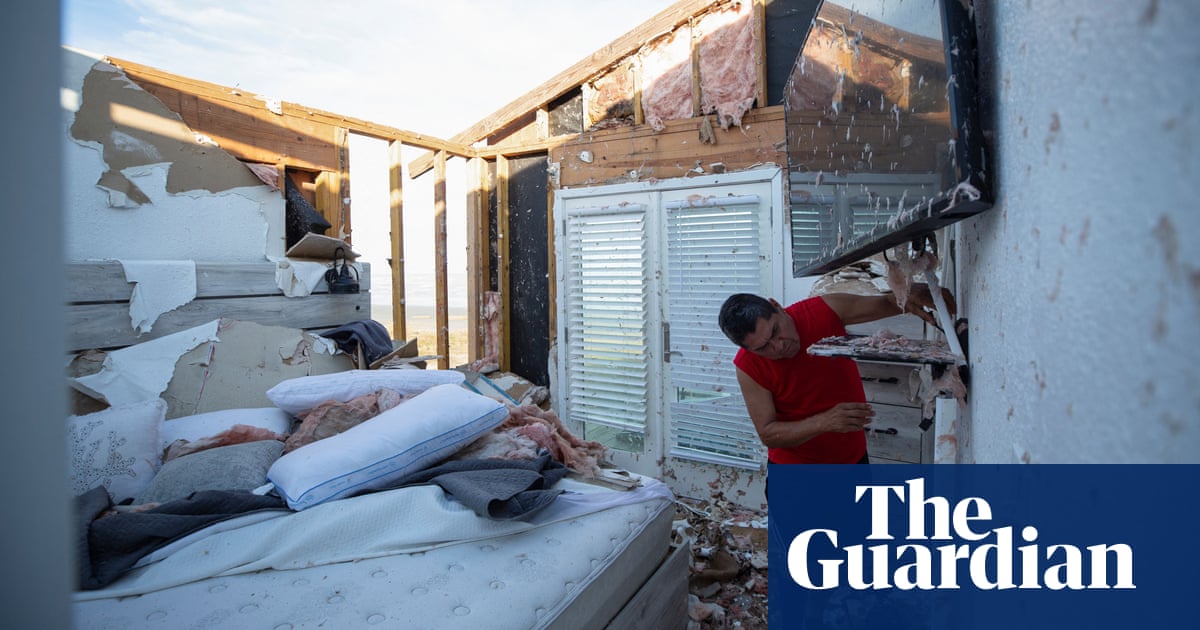After Hurricane Beryl’s destruction, climate scientists fear for what’s next | Climate crisis

The poignancy was unmistakable: prognosticators at Colorado State University amended their already miserable seasonal tropical cyclone forecast on Monday precisely as Hurricane Beryl was filling Houston’s streets with floodwater and knocking out power to more than 2m homes and businesses.
“A likely harbinger of a hyperactive season” was how CSU researchers characterized Beryl, which set numerous records on the way to its Texas landfall, including the earliest category 5 hurricane, strongest ever June storm, and most powerful to strike the southern Windward Islands.
In the Caribbean, the storm caused almost unprecedented destruction, and killed dozens from Grenada to the US.
With the six-month Atlantic hurricane season only six weeks old, and a monster storm such as those only usually seen in the later, peak months already in the books, climate scientists fear for what’s to come.
They also warn that nobody should be surprised about the eye-popping start to the 2024 season, or the rapid intensification of Beryl from a modest tropical storm into a deadly 165mph cyclone, because of “crazy” ocean heat that acts like rocket fuel for developing hurricanes.
“It’s a big wake-up call, certainly for folks in the US and throughout the Caribbean, that a greater risk for more extreme hurricanes is certainly there, and with warmer waters into the late spring we’re getting an earlier start to the hurricane season,” Brett Anderson, senior climate scientist with AccuWeather, told the Guardian.
“We’re seeing these types of storms developing very quickly, more so than 20 to 30 years ago, with all that warm water in place. Science has become really good with computer models forecasting the tracks of these storms, but intensity is still a challenge. Rapid intensification certainly we’re very concerned about, especially when these things get closer to the coast.”
It’s an old adage in hurricane season that it only takes one storm to make it an active season. On Monday, the team at Colorado state, one of the most respected in the forecasting business, predicted even more of them.
They now expect six major hurricanes with sustained wind speed above 111mph, and 12 hurricanes overall, before the season ends on 30 November.
In April, they predicted five major hurricanes from 11, both scenarios matching the National Oceanic and Atmospheric Administration prediction in May of a season well above the average of seven hurricanes and three major cyclones.
The meteorologists are confident that the alphabetical list of 21 names allocated when a disturbance becomes at least a 39mph tropical storm will be depleted this year for only the fourth time since 2005. Previously that had not happened since the naming convention began in 1950.
“We’re at well over a year now, probably 15 or so months of record breaking or close to record breaking ocean heat, and when I say close I mean comparing 2024 with 2023, so well above any previous year,” said Brian McNoldy, a climate scientist at the University of Miami.
“Obviously we have climate change acting on everything, it’s got its finger on this for sure. But it doesn’t totally explain the abrupt jump we saw in the spring of 2023 that hasn’t ended. There are other things going on.
“Last year, yes, we had these record-smashing warm ocean temperatures in the Atlantic, but we also started to get a stronger El Niño as the year went on, and all things being equal El Niño acts to reduce Atlantic hurricane activity.
“It probably did to some degree, but thanks to the ocean temperatures being so warm it ended up being an above average hurricane season anyway.”
Beryl, meanwhile, reinforced one often overlooked aspect of a coastal hurricane strike, the spawning of tornados and flooding far inland that can be equally as destructive and deadly. Beryl’s reach extended as far as New England, and caused fatalities in Texas, Louisiana, Vermont. AccuWeather’s initial estimate of economic loss in the US is up to $32bn.
“People need to be prepared for these kinds of storms,” said Matt Marshall, AccuWeather’s senior director for strategic projects.
“More die from water than wind in a hurricane, but people track storms by the wind speed. We use a real impact scale for wind, storm surge intensity, how much rain is going to fall and therefore how much flooding there’s going to be from rain, and it uses the overall economic impact expected by the storm to capture how much damage there’s going to be overall.
“We anticipated extended power outages in Texas, we anticipated the flooding rain coming up through the Great Lakes and into New England, we anticipated the potential tornado outbreak to the east and north of the storm track so things are pretty well aligned with what we forecast.”
As the frequency and intensity of storms continue to escalate, Marshall said, so will the cost.
“They’re causing more damage, the cost of materials has gone up, the cost of supply chains is going up,” he said.
“So when a hurricane comes in and knocks out power for days to areas and knocks out the supply chain, all of that’s going to have a downstream impact.”
Source link




